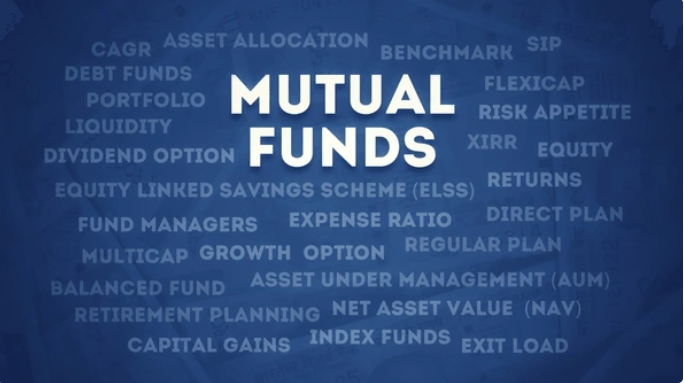A crucial first step in reaching financial objectives and safeguarding your future is investing. Choosing where to invest your money might be difficult with so many possibilities available. Mutual funds are well-liked among these choices because of their expert management and variety. To appreciate their benefits and drawbacks, mutual funds must be compared to other investment options such as direct stock, fixed deposits (FDs), real estate, gold, and even cryptocurrencies. This straightforward advice will assist you in making an informed choice. 1. Direct equity versus mutual funds Mutual Funds: Mutual funds combine investor capital and use it to purchase a variety of stocks, bonds, and other securities. Professional fund managers oversee them, evaluating markets and choosing investments for clients. Ideal for people who do not have the time or knowledge to actively manage their finances. Equity Direct: Investors can acquire shares of particular companies by making direct investments in individual stocks. Because of market volatility, it carries a larger risk but also offers a bigger potential reward. demands in-depth knowledge, consistent observation, and a grasp of market trends. Comparatively speaking, novice or passive investors looking for expert management and diversification should consider mutual funds. Direct equity, on the other hand, is best suited for seasoned investors who are prepared to assume greater risk and who wish to actively manage their investments. 2. Fixed Deposits (FDs) vs. Mutual Funds Mutual Funds: Despite being vulnerable to market risks, they have the potential to yield larger returns, particularly in the case of equities mutual funds. Offer choices such as Systematic Investment Plans (SIPs), which enable clients to make regular, small investments. Deposits that are fixed: a low-risk investment in which you make a fixed-term deposit with a bank or other financial organization and receive guaranteed interest. not impacted by changes in the market, although they usually yield smaller returns than mutual funds. In contrast, fixed deposits are the best option for risk-averse investors looking for steady and assured returns, whilst mutual funds are better suited for long-term wealth growth. 3. Real Estate vs. Mutual Funds Mutual Funds: Extremely liquid, enabling you to take your money back at any time (though exit loads may apply in some situations). They are more accessible to a wider spectrum of investors because of their reduced initial investment requirements. Property: entails purchasing real estate, which frequently calls for a sizable down payment. yields returns through the growth of property values and rental revenue, but it is not very liquid. connected to upkeep expenses, real estate taxes, and intricate legal issues. In contrast, mutual funds have superior liquidity, are more reasonably priced, and are simpler to manage. Despite offering tangible goods, real estate requires more capital and requires longer holding times before profits can be realized. 4. Gold vs. Mutual Funds Mutual Funds: To diversify your portfolio, provide exposure to a range of asset classes, such as debt instruments and stocks. The type of mutual fund chosen and market performance both affect returns. Gold: regarded as a hedge against inflation and a safe-haven asset. provides consistent returns but does not produce income in the form of interest or dividends. can be kept in physical form (bars, coins, jewelry), digital form, or as gold exchange-traded funds (ETFs). In contrast, gold is appropriate for wealth preservation and hedging against economic risks, whilst mutual funds are better for long-term growth and diversification. 5. Cryptocurrencies vs. Mutual Funds Mutual Funds: overseen by regulatory bodies such as SEBI in India, guaranteeing openness and safeguarding investors. Provide a large selection of funds to suit varying risk tolerances and investing objectives. Cryptocurrencies: a blockchain-based investment alternative that is extremely speculative and volatile. offers the possibility of large rewards, but there are substantial dangers because of market volatility and regulatory uncertainty. Comparatively speaking, most investors find mutual funds to be a safer and more reliable choice. People who are interested in new technology and have a high risk tolerance may find cryptocurrencies appealing. 6. Public Provident Fund (PPF) vs. Mutual Funds Mutual Funds: Allow for flexibility in investment quantities and durations; most funds (except from tax-saving ELSS funds) do not have required lock-in periods. Higher returns could be possible, depending on how the market performs. PPF: a fixed-interest savings plan supported by the government that offers risk-free and tax-exempt returns. Comes with a 15-year lock-in period, though partial withdrawals are allowed after a few years. Comparison: PPF is excellent for long-term, risk-free savings, particularly for tax benefits. Mutual funds, especially equity funds, are better for higher returns and wealth creation over time. Key Takeaways Risk and Return: Mutual funds offer a balanced approach to risk and return, making them suitable for various investor profiles. Other options like direct equity or cryptocurrencies are riskier but can deliver higher returns. Liquidity: Mutual funds are generally more liquid compared to real estate or PPF, allowing investors to access their money more easily. Diversification: Mutual funds provide instant diversification, reducing the risk of concentrating on a single asset or sector. Ease of Investment: Mutual funds are easy to invest in, requiring minimal effort compared to managing real estate or monitoring individual stocks. Regulation: Mutual funds are well-regulated, ensuring transparency and investor protection, unlike cryptocurrencies, which lack regulation in many regions. Conclusion Every investment option has its unique features, benefits, and risks. The best choice depends on your financial goals, risk tolerance, and investment horizon. Mutual funds are a versatile and accessible option that suits most investors. Whether you choose mutual funds, direct equity, or traditional options like FDs and PPF, make sure to conduct thorough research or consult a financial advisor to align your investments with your financial objectives. Frequently Asked Questions (FAQs) 1. Are mutual funds safer than investing in cryptocurrencies? Yes, mutual funds are regulated by authorities like SEBI in India, offering greater transparency and lower volatility compared to cryptocurrencies, which are highly speculative and subject to market fluctuations. 2. Can I lose money in mutual funds? While mutual funds carry some risk due to market fluctuations, diversifying











